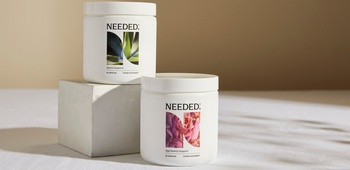There is a complex world of chemical compounds that intersect with our daily lives. But three names stand out: PFAS, BPA, and Phthalates as constantly in the newscycle. And for good reason recent studies show that almost all US adults carry phthalates in our bodies. PFAS have been found in 99 percent of all humans.
But how concerned should we be about these “plasticizers” and what can we do to limit both our and our families exposure to them?
First let’s get a better understanding what these substances are:
PFAS (Per- and polyfluoroalkyl substances)
PFAS are a group of synthetic chemicals known for their water and oil-resistant properties. They have been used in a wide range of products, from non-stick cookware to stain-resistant fabrics and firefighting foam. The persistence of PFAS in the environment and their potential health effects have sparked widespread concern.
Bisphenols (e.g., BPA - bisphenol A)
Bisphenols are chemicals used in the production of plastics and epoxy resins. BPA, one of the most well-known bisphenols, has been used in food packaging, water bottles, and other consumer goods. Research has linked BPA exposure to hormone disruption, reproductive issues, and developmental concerns.
Phthalates
Phthalates are a group of chemicals used to make plastics more flexible and resilient. They are commonly found in products such as vinyl flooring, medical devices, and personal care products like cosmetics and fragrances. Studies have associated phthalate exposure with adverse health effects, including reproductive issues and potential risks to children's health.
So all of that doesn’t sound great, but also sounds like it’s very beyond our control. Is there anything we can do to limit exposure or decrease the use of these compounds in our daily lives?
Limiting Exposure
- Choose PFAS-Free Products: Opt for PFAS-free alternatives whenever possible, such as stainless steel or cast iron cookware instead of non-stick pans, and natural fabrics instead of stain-resistant clothing.
- Avoid BPA-Containing Plastics: Look for products labeled as BPA-free, especially for food and beverage containers. Consider using glass or stainless steel containers for food storage and water bottles.
- Check Ingredient Labels: Be mindful of phthalates in personal care products. Choose phthalate-free options or products with natural ingredients.
- Reduce Plastic Use: Minimize exposure to bisphenols and phthalates by reducing overall plastic use. Use reusable containers and bags, and choose products with minimal plastic packaging.
- Filter Drinking Water: Use a water filter certified to remove PFAS and other contaminants from drinking water. Regularly replace filters to maintain effectiveness.
- Support Regulations: Advocate for stricter regulations on the use of these chemicals in consumer products and industrial processes. Support initiatives that promote transparency and safer alternatives.
The Bottom Line
By being informed consumers and making conscious choices, we can take steps to limit our exposure to PFAS, bisphenols, phthalates, and other potentially harmful chemicals, contributing to a healthier environment and a safer future.














